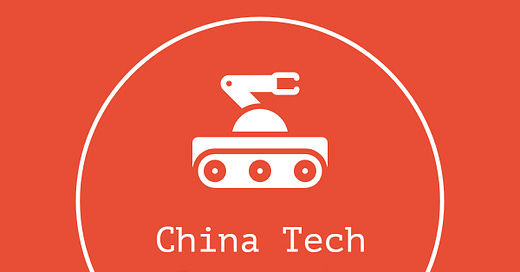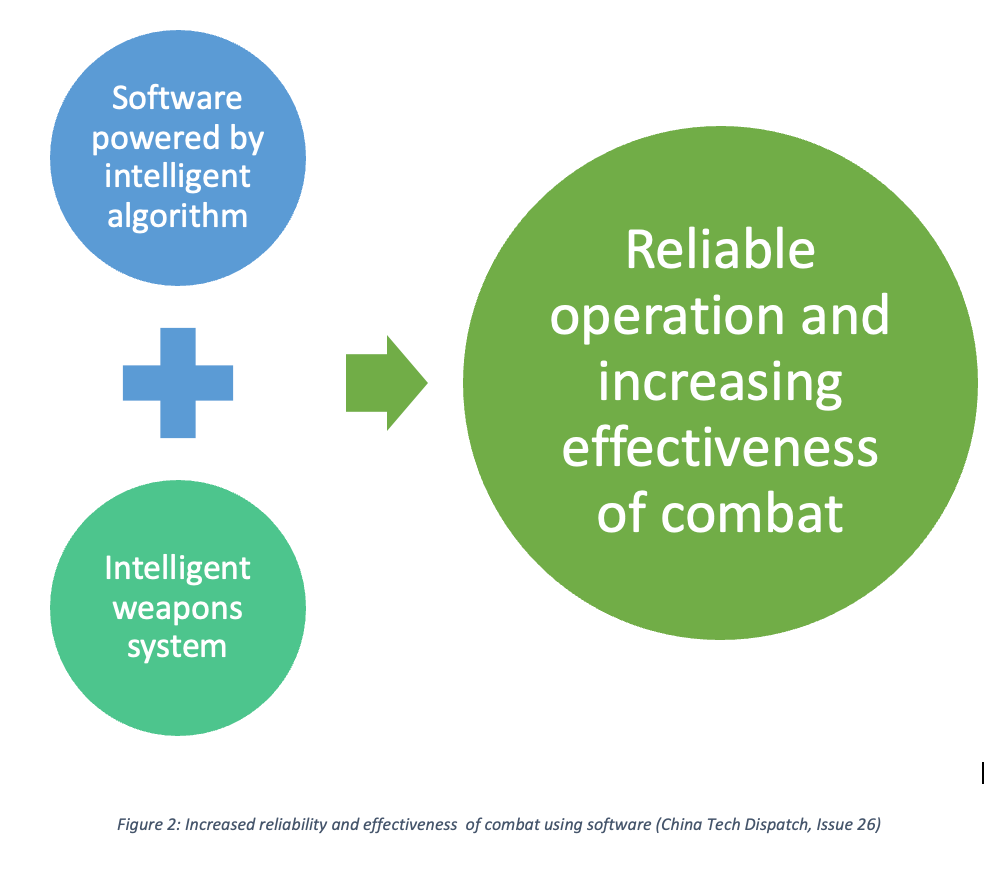Hey,
My article highlighting the significance of the Chinese reports on US cyber-activities in China was published by The Diplomat. You can read it here.


I. Military and Warfare
Role of Software in Intelligent Warfare
In an article published by PLA Daily, Zhao Xiangang, Han Yanzhe, and Yuan Yi (affiliation unknown) highlight the importance of software and algorithms in intelligent warfare. Authors see such capabilities as an "important 'force multiplier' in intelligent warfare."
The following figures approximately describe the relation between software and intelligent warfare as conceptualized by the authors.
Authors quote data here that in second-generation fighters, 20% of the fighters had functions implemented using the software. In fourth-generation fighters, about 80% will have software-dominated functions.
Source of this data cited by the authors is unknown. However, the intention to cite this data is to argue that the importance of software-dominated weapons and supporting systems will increase in the future.
The first important factor they highlight is the need to form a dedicated force for software assurance. Complex weapons systems need complex software and algorithm. Such systems are also vulnerable to attack from adversaries. Hence there is a need to
form a dedicated force for software assurance. This force will be tasked to efficiently maintain, improve, and upgrade the software, and expand the functions of the software system according to the needs of the environment and tasks. This is essential to ensure the effective implementation of combat operations.
The second important factor is implementing an innovative software assurance model to improve the security and efficiency of the software used. They suggest implementing a support model which combines military support and support from the manufacturer. Functionalities and efficiency of the software used should be tested and enhanced during both wartime and peacetime. Moreover, a remote online support capability should be improved to meet the needs of decentralized deployment of intelligent battlefield forces and dynamic operations.
The fourth-generation warfare (4GW) is used in advanced tech-dominated warfare here. If one has to agree on the classification of "generations of warfare" as done by William Lind, then the type of warfare referred to by the authors would be the "fifth-generation warfare" (5GW), not 4GW. The 5GW is supposed to be dominated by emerging technologies and fully autonomous systems. Some of the characteristics of 4GW do relate to the points discussed by the authors here, but 4GW relates more to Information Warfare rather than intelligent warfare. Refer to the "InfoBytes" section for more details.
Additional Reading:
II. InfoBytes
Generations of Warfare
The concept of generation of warfare was supposedly coined by William Lind, an American author known as the earliest proponent of the Fourth Generation Warfare (4GW) theory. In a 1989 publication titled "The Changing Face of War: Into the Fourth Generation" (Lind et al.) outline the three distinct generations of warfare and the characteristics of the fourth one. They highlight the two major catalysts for changes in warfare were technology and ideas.
First Generation Warfare (1GW): Lind refers to this as the "era of the smoothbore musket, the tactics of line and column." This refers to the ancient era warfare methods where battles were dominated by manpower.
Second Generation Warfare (2GW): 2GW was a response to the development in warfare with the development of rifled musket, breechloaders, barbed wire, the machinegun, and indirect fire. According to Lind, in 2GW, "tactics were based on fire and movement, and they remained essentially linear."
Third Generation Warfare (3GW): The driving force of 3GW, according to Lind, was ideas. He says, "third generation tactics were the first truly nonlinear tactics."
Fourth Generation Warfare (4GW): 4GW loosely refers to a stage in warfare where the monopoly of nation-states over violent combat reduces and the non-state actors dominate the warfare and innovation in technology changes the nature of warfare. The emphasis is also on the decentralized nature of warfare. As per Lind et al., 4GW will retain some characteristics of previous generations, but also accentuate some other characteristics. Some characteristics of 4GW as highlighted by Lind et al. are:
Widely dispersed and largely undefined.
The distinction between war and peace will be blurred to the vanishing point.
It will be nonlinear, possibly to the point of having no definable battlefields or fronts.
The distinction between "civilian" and "military" may disappear.
Success will depend heavily on effectiveness in joint operations as lines between responsibility and mission become very blurred.
Psychological operations may become the dominant operational and strategic weapon in the form of media/information intervention.
The tactical and strategic levels will blend as the opponent's political infrastructure and civilian society become battlefield targets
Fifth Generation Warfare (5GW) is defined as warfare dominated by emerging technologies like AI and fully autonomous systems. Various scholars have used this term to conceptualize different types of warfare which essentially emphasize leveraging emerging technologies. However, 5GW has been criticized by some scholars, including William Lind.
Additional Reading:
I highly recommend reading "The Changing Face of War: Into the Fourth Generation" by Lind et al. on conceptualizing generations of warfare.
Apart from this paper, selected chapters from the following book will also be useful to get clarity on generations of warfare and 5GW.
The handbook of fifth-generation warfare, Edited by Daniel H. Abbott (2010)
"The xGW Framework" by Daniel H. Abbott, pp 17-19
"Sunsets and Dawns: The End-Game for 5GW and the Human Era" by Patrick Dugan, pp 99-124
III. Before You Go
Applications for Takshashila’s Public Policy Courses are now open.
The Graduate Certificate in Public Policy (GCPP) is a 3-month course. There are three streams to choose from: Defence and Foreign Affairs, Technology & Policy, and Advanced Public Policy. Refer links below for details of each specialization.
GCPP: https://bit.ly/may22-ti-gcpp
For Advance Public Policy: https://bit.ly/may22-ti-app
For Tech & Policy: https://bit.ly/may22-ti-tp
For Defence & Foreign Affairs: https://bit.ly/may22-ti-dfa
Megha Pardhi is a Research Analyst at The Takshashila Institution. She tweets at @pardhimegha21.





